Lilyan Tashman: Girl About Town
 While working earlier this year on the post for my pre-Code pick for February – Grand Hotel – I checked out one of the extras on the DVD, which depicted the film’s premiere at Grauman’s Chinese Theatre on April 29, 1932. This thoroughly enjoyable glimpse into old Hollywood showed a variety of stars who were at the event, including Edward G. Robinson, Jean Harlow, Robert Montgomery, Norma Shearer, Clark Gable and Marlene Dietrich. Also among the guests were husband and wife Edmund Lowe and Lilyan Tashman, who spoke a few words to the event’s host, Conrad Nagel. I don’t know why, but my interest was piqued by the introduction of Lowe and his spouse – maybe because, just days earlier, I’d seen the actor playing the philandering physician in Dinner at Eight. Or perhaps because I’m always captivated by Hollywood couples. Or maybe just because, although I was quite familiar with Edmund Lowe’s films, I knew nothing at all about Lilyan Tashman. But, suddenly, even her name was enticing to me – there was something attractive and exotic and glamorous about it. So I decided to do a little digging . . . and, boy – talk about a bountiful excavation! In the months that followed, I developed a near-obsession with getting to know this actress – watching as many of her movies as I could get my hands on, and reading everything I could about her, from the kind of cocktail she liked, to how she decorated her beach house, to what she spent on her chinchilla coat. And finally, at long last, I’m pleased to offer “Lilyan Tashman: Girl About Town” – a peek inside the life and times of what one reporter called “the most gleaming, glittering, modern, hard-surfaced and distingue woman in all of Hollywood.”
While working earlier this year on the post for my pre-Code pick for February – Grand Hotel – I checked out one of the extras on the DVD, which depicted the film’s premiere at Grauman’s Chinese Theatre on April 29, 1932. This thoroughly enjoyable glimpse into old Hollywood showed a variety of stars who were at the event, including Edward G. Robinson, Jean Harlow, Robert Montgomery, Norma Shearer, Clark Gable and Marlene Dietrich. Also among the guests were husband and wife Edmund Lowe and Lilyan Tashman, who spoke a few words to the event’s host, Conrad Nagel. I don’t know why, but my interest was piqued by the introduction of Lowe and his spouse – maybe because, just days earlier, I’d seen the actor playing the philandering physician in Dinner at Eight. Or perhaps because I’m always captivated by Hollywood couples. Or maybe just because, although I was quite familiar with Edmund Lowe’s films, I knew nothing at all about Lilyan Tashman. But, suddenly, even her name was enticing to me – there was something attractive and exotic and glamorous about it. So I decided to do a little digging . . . and, boy – talk about a bountiful excavation! In the months that followed, I developed a near-obsession with getting to know this actress – watching as many of her movies as I could get my hands on, and reading everything I could about her, from the kind of cocktail she liked, to how she decorated her beach house, to what she spent on her chinchilla coat. And finally, at long last, I’m pleased to offer “Lilyan Tashman: Girl About Town” – a peek inside the life and times of what one reporter called “the most gleaming, glittering, modern, hard-surfaced and distingue woman in all of Hollywood.”
* * * * * * * * * * * * * * * * * * * * * * * * * * * * * *
She had striking features, large, smoldering eyes, and brassy blond hair. An easy smile and expressive hands that frequently reached out to touch an arm or stroke a lapel. A sense of nonchalant sophistication and, when she wanted to reveal it, an unabashed sexiness. And, boy, did she know her way around a wisecrack. If you’ve never seen Lilyan Tashman in a film, you can see what I mean by checking her out in New York Nights (1929), Millie (1930), Girls About Town (1931), or Murder By the Clock (1931) – all four are available on YouTube, just waiting to be discovered.
Oh – did I mention that voice? Like honeyed bourbon. Straight.
Brooklyn-born Lilyan Tashman entered the world on October 23rd – although the actress claimed that her birth year was 1899, it was probably more like 1895 or 1896, given the timeline of her professional career. She was the youngest of 10 (some sources say eight) children born to Rose Cook and Morris (sometimes known as Maurice) Tashman, a children’s clothing tailor and manufacturer who was born in Poland and later emigrated to Germany and then the United States. The blonde, blue-eyed Lilyan put her good looks to use as a teen, landing freelance jobs as a fashion and artist’s model while a student at Girls’ High School. One of her gigs was for Austrian painter Raphael Kirchner, who specialized in picture postcards depicting mildly erotic feminine forms; Kirchner pronounced that Tashman had “the most beautiful legs in the world.” She also started working in vaudeville, and even made it to Broadway in 1913, appearing in the chorus in a short-lived musical called Her Little Highness. The production, which closed after 16 performances at the Liberty Theater, also featured future film star Mae Murray (the one with the “bee-stung lips”).
The following year, Lilyan landed a part on a bill at the Davidson Theater in Milwaukee that featured a double act by future star Eddie Cantor and actor Al Lee. Before long, Lee – who’d previously worked as straight man to comedian Ed Wynn – and Lilyan were an item, and they got married after a whirlwind courtship. Lee and Cantor parted ways two years later, and Lee went on to serve as stage manager for the popular Broadway revue, George White’s Scandals. Meanwhile, Lilyan landed a role in the 1916 edition of the Ziegfeld Follies, portraying Viola in a Shakespeare-themed number. The cast also included newcomer Marion Davies. (Lilyan’s studio press releases claimed that she was chosen for the Follies by none other than Flo Ziegfeld himself, who spotted her lunching at a Broadway eaterie and asked a mutual acquaintance for an introduction. The story is likely apocryphal, but it’s fittingly colorful!) Lilyan remained with the show for the 1917 and 1918 editions as well.
After leaving the Follies, Lilyan won the part of Trixie in The Gold Diggers, a popular comedy of chorus girl life written by Avery Hopwood and produced by David Belasco. Starring Ina Claire (for whom Lilyan served as understudy), the play ran for two years. It was also made into a 1923 silent film and a decade later, it re-emerged as Golddiggers of 1933 with Ruby Keeler, Dick Powell, and Aline MacMahon as Trixie. Of the experience she gained on the stage, Lilyan wrote in 1931 that she learned “how to ruin a performance by anticipating when the laughs were coming and waiting for them. That is the fascination of stage work – its unexpectedness. One must anticipate nothing, as no two audiences are alike.”
When the run of The Gold Diggers ended after 282 performances in 1920, Lilyan and Al Lee separated, and they divorced the following year. And while she made her film debut that same year – in a Richard Barthelmess silent feature called Experience (1921) – she suffered a bit of a professional nosedive when her next stage play, A Bachelor’s Night, closed after eight performances, followed by Lady Bug in 1922, which closed after five. But her life off the stage was definitely looking up: enter actor Edmund Dantes Lowe. The actor, who would go on to appear in such films as What Price Glory (1926), Attorney for the Defense (1932), and Dinner at Eight (1933), had started out with plans to become a priest, and also explored careers as a lawyer and an English teacher before winding up on the stage. And actually, he’d been in Lilyan’s life for several years; around 1918, while Lowe was performing in a Broadway production called Roads of Destiny, he met and befriended Lilyan, but according to the actor, he’d spied the blonde beauty even before they met: “I fell in love with her when I saw her on the stage – she was in the Follies with seven other girls,” Lowe recalled in a 1925 Photoplay article. “But to me, she stood out. She dominated the whole group – she scintillated. And from that day to this, I have loved her. In fact, I love her more each day.”
At the time that he met Lilyan, Lowe was recently separated from his wife of four years, Esther Miller – they would finally divorce several years later. In 1922, after appearing in the short-lived play Desert Sands, Lowe decided he’d had enough of the Great White Way and headed west to Hollywood. Not long after, Lilyan moved to Tinseltown as well.
“I came to Hollywood with the idea that I would give myself three months in which to make good in pictures,” Lilyan recalled in a 1926 Photoplay article. “If I was not well on my way to a certain success within that time, I would return to Broadway.”
Some sources claim that Lilyan “followed” Edmund Lowe to Hollywood, while others attribute her move west to her series of disappointments on the stage. Whatever the reason, it didn’t take long for Lilyan to start appearing in big-screen features, including the oddly monikered Nellie, the Beautiful Cloak Model (1924). After her performance in this film, one critic noted that she “shows great promise” and another touted her as the “screen find of the year.”
Ports of Call – in which she co-starred with Edmund – was one of 10 films in which Lilyan was featured that year; the reviewer for Variety proclaimed that she “is acquiring poise and seems more at ease in this picture than previously.” In it, she portrayed Lillie, who meets Lowe’s character in a saloon in the South Seas, where he has fled to nurse his broken heart. Life imitated art when, on September 1, 1925, Lilyan and Lowe became man and wife. In an article that appeared in Motion Picture magazine in the early 1930s, Edmund Lowe outlined his reasons for marrying Lilyan, calling her a “good scout.”
“I like a good scout with a good heart,” he said. “You know there is something irresistible about a woman who can be a real pal, enjoy his companionship in a comfortable, easy way. Deliver me from a woman who is forever worrying about how she looks and what she says. I guess that’s why I married Lilyan Tashman. She’s the best little scout in the world!” And as for Lilyan, she told Photoplay before her wedding that she was marrying Edmund because he was a “real man.”
“Of all the people I’ve ever known, he has the best disposition,” she said. “He’s genuine and real. We have planned everything together – we have the same love of the tangible and intangible things that go into the making of a home. He is tender, generous, manly – he will make the ideal husband.” A few years after their nuptials, a March 1933 article would assert that the only thing that Lilyan and Edmund ever argued about was a little black beret that Lilyan bought in Germany and which they both liked to wear.
I have to note here that most of today’s references proclaim with confidence that Edmund Lowe was gay and that Lilyan was a lesbian; many sources assert that her most famous lover was Greta Garbo, and one refers to Garbo’s biography by Barry Paris, in which Lina Basquette and Irene Mayer Selznick claim that Lilyan made passes at them. Notwithstanding the private sexual tendencies of either of the parties concerned – which, for my money, certainly can be little more than innuendo, supposition, and conjecture today – Lilyan and Lowe appeared to be a happy couple (more than one columnist described them as “unusually happy”). By all accounts, they were close friends, mutually supportive performers, and extravagant lovers of life. “Marriage should come first – a career second,” Lilyan was once quoted. “My interest is my husband and my happiness at his success is second to none.” In another interview, she gave some hints to the press regarding the secret to the happiness in her marriage.
“Ed and I don’t fight over the little things,” she said. “It’s unnecessary. The cure for it is consideration of the other fellow. Of course, the only way a woman can hold any man is to be more interesting to him than any other woman can be. Where there is love, there is jealousy – to a degree. I have never had occasion, however, to be jealous of Eddie. I pride myself that I interest him more than any other woman.”

A gathering of pals at the Malibu beach house (from bottom left): Douglas Fairbanks, Lilyan, Clifton Webb, Kenneth McKenna, Edmund, Kay Francis, Ivor Novello, and Joan Crawford (What a party!)
Lilyan and Edmund purchased a house in Beverly Hills that they named “Lilowe,” which featured mirrors on the entire lower floor and was decorated in all white (“Even the window drapes of damask tablecloth. Rugs, walls, chair and plumbing fixtures – all white,” declared a Motion Picture article called “The Hollywood Frivolities of 1932.”) The house also featured Lilyan’s extensive collection of hands fashioned from a variety of materials, including gold, silver, china, glass, copper and pewter. The couple became known for their lavish parties – “Hollywood wouldn’t be Hollywood if Eddie and Lilyan Tashman didn’t give at least one swell party every month,” one columnist declared. They also had lively gatherings at their Malibu beach house which, like their Beverly Hills home, was celebrated for its striking and memorable décor.
“Done in Second Regency style, the cottage is the latest word in red and white. In exteriors and interiors, the flashy color scheme is observed,” wrote reporter Donald V. Wagoner in 1931, proceeding to discuss the “marbleized white linoleum” floors covered with red and white rugs, white damask drapes lined with red tiebacks, and even red and white pots and pans in the kitchen, “where the lovely Lilyan is quite at home.” And another publication reported that Lilyan had a complete beach wardrobe – bathing suits, pajamas and evening gowns – made of red and white to match her home.
Lilyan’s homes weren’t the only palette for her personal style. By now, she was also recognized for her fashion sense, joining Gloria Swanson and Constance Bennett on lists of best-dressed Hollywood stars (although she insisted, “I wear only what I like”). A 1929 column reported that she “startled a premiere audience” when she showed up wearing a necklace made out of real orchids. Another publication claimed that she bought more hats than any other movie actress, while yet another gushed, “Every smallest detail from her shoe buckles to her hat crown are in harmony. Her bag, handkerchief, scarf, stockings, gloves, jewelry, cigarette case and holder, are always exactly right. I know that her lingerie, her garters, girdle, are all molded for each costume, to give it the best fit.” Newspapers and magazines of the day carried meticulous descriptions of her outfits – in discussing Lilyan’s appearance with her husband at a luncheon, syndicated columnist Mollie Merrick called her the “undisputed queen of chic,” and declared that she and Edmund represented “the epitome of what the smart man and woman should wear.”
“Lilyan Tashman’s gray beige hat was moulded to her tiny head. It was innocent of so much as the smallest pleat, and boasted a sweet flare at the sides, reminiscent of a Dutch baby’s bonnet,” Merrick rhapsodied. “Lilyan wore a gown of the same shade in flat crepe, unrelieved by color and bare of trimming, save for two loosely tied bows . . . The gown was conspicuous for its tight hip modeling. And Tashman is conspicuous for her exquisite hips. It was a fortunate combination.” (Incidentally, Lilyan wasn’t the only one in the family to garner such tributes – in the March 1931 issue of Motion Picture, writer Marquis Busby declared: “When it comes to male haberdashery, all the boys sit up and take notice of Edmund Lowe. He may be famous for hard-burled marines on the screen, but no one has to tell Eddie what is in the dernier cri [French for the “latest fashion”] for a morning wedding, a corned-beef-and-cabbage fiesta, or a Mayfair ball.”)
According to Lilyan, she’d been interested in fashion since her childhood.
“When I lived at home with my family, we girls had quite a time over clothes,” she recalled in 1933. “I was the youngest, and was continually cutting up things, putting in different sleeves, and pursuing my mania of making belts out of everything that came into my fingers. At our house, the first girl out was the best-dressed! I have never forgotten some of the lessons in clothes and economy that I learned in those days.”
Over time, the actress – who became known as “La Tashman” – began collecting effusive praises from numerous sources, each seemingly determined to out-do the next with the level of their enthusiasm. One of my favorites appeared in the April 1930 issue of Motion Picture magazine, in an article entitled “We Point With Pride.” In it, Lilyan was described as “our smartest woman.” The exuberant author praised her hair, her clothes, and her “sophistication,” adding, “We always try to exhibit her to visitors, feeling that she really belongs inside a Michael Arlen novel, and that, by knowing her, we belong inside it a little bit ourselves.” (Of course, after reading this, I had to do some research to find out who Michael Arlen was – I learned that he was a well-known writer, born in Armenia, who was famous for his satirical romances set in the smart society of England. So there.) Another unique mention appeared in the June 1930 New Movie magazine, which labeled her “picturesque and vital and piquant,” and still another was offered in the March 1931 Motion Picture, which declared, “What you’re wearing this season Lilyan was wearing last season. More than one Hollywood lady has gone to bed with a stiff neck from craning at the Tashman plumage.”
One article even detailed how much Lilyan spent on her extensive wardrobe – New Movie reported that “a peep into her fur coat wardrobe is enlightening. There is a short ermine wrap at $1500; a long ermine at $2500; a mink coat at $6000; a chinchilla coat at $30,000; a beaver coat at $1,000; a galyak at $650; a lapin at $500; a broadtail at $8,000; a pair of silver foxes at $1500; a pair of blue foxes at $750; and a sable scarf at $2000.” Edmund Lowe once explained that while his salary went toward the upkeep of their home, the servants, groceries, and household expenses, Lilyan “reserved the privilege of playing for her own clothes and luxuries.”
Interestingly, famed columnist Hedda Hopper once asserted that Lilyan did not necessarily deserve the label of Hollywood’s best-dressed woman, complaining that she “wears the theatre on her back.” The comment sparked a well-publicized feud that was gleefully chronicled in several publications.
“Understand,” Hedda Hopper was quoted in the July 1933 issue of Motion Picture, “any remarks that I make about Lilyan’s clothes are not a reflection on her personally. I like Lil. I adore her. . . . She wears very beautiful clothes. She dresses in the latest style – often far ahead of it, in fact! I wish I could afford clothes like hers. I wish I could have as many clothes as she has – but if I did, I certainly would not try to wear them all at the same time!” (Can’t you just hear Rosalind Russell a la The Women when you read this?)
Lilyan was undaunted. “If [Hedda] were an authority on clothes, I would pay some attention to her criticism. But, of course, it’s really too absurd,” she rejoined. “One is either smart – or one simply isn’t smart. One is chic – or one is not chic. Unfortunately, Miss Hopper is not noted for her chic. I am very fond of Hedda and I think she looks quite nice in her things. One would place her as a very respectable aunt from the Middle West. But chic? No.” And the Hollywood Reporter carried the news that both Lilyan and Hopper had been invited to judge an Easter fashion show at the Agua Caliente Casino in Baja California, but Lilyan had declined the offer, sending a wire that stated, “Sorry, but am giving cocktail party Sunday. Miss Hopper [is] qualified to judge anything passé.” Hedda Hopper promptly fired back with a wire of her own, asserting that she was resigning as a judge in favor of Lilyan, “who will fit the glamour and flamboyancy of your Casino to a dot.”
A similar – but far less caustic – garb-related feud developed between Lilyan and actress Eleanor Boardman – according to gossip columnists, the two women stopped speaking to each other after Boardman overheard Lilyan criticizing her clothes. The long-time grudge came to an abrupt end when actor John Gilbert took Lilyan to Eleanor’s home without telling her beforehand whose house they were visiting. According to a column in the August 1931 Motion Picture magazine, after giving the abode the once-over, Lilyan complimented Eleanor on her décor, to which Eleanor replied sweetly, “I’m so glad you like it better than my clothes!” The two reportedly “burst into hearty laughter and have been warm friends ever since.” Lilyan also was not exactly buddy-buddy with actresses Lupe Velez and Constance Bennett – a February 1933 article in Picture Play affirmed, “Constance Bennett does not like Lilyan Tashman and Lil holds for Constance about the same affection . . . . They will not appear together in a picture.”
Lilyan’s burgeoning persona included frequent and enthusiastic references to her rapier wit – a March 1926 article in Photoplay offered that she was a “brilliant addition to any social affair, be it tea or dinner party,” and another article praised her as vivacious and vigorous and interesting, adding that she “tells a good story as well as she enjoys a joke.” She was also known among waiters around town as one of the best women tippers, and hotel bellboys reportedly referred to her as “Big Hearted Lil.”
It must be acknowledged that not everyone was enamoured with Lilyan and her facility for style and fashion, however. In the June 1931 Motion Picture magazine, one columnist practically seemed to be rubbing together his hands with delight as he reported that Lilyan had been spotted at a party wearing the same dress as a visitor from Kansas City. And in the January 1933 edition of Picture Play magazine, writer Judith Field penned an open letter to the actress entitled, “Is Lilyan Clothes Crazy?” In it, Field said, “The fans and I want to know whether you’d rather be considered an actress or a manikin (sic). This idea of keeping up your reputation must be a strain in many ways – and you can overdo it. As a matter of fact, it appears to have affected your behavior, or else how could you assume that Grand Oracle at Delphi manner while discussing clothes and how to wear them? . . . . How about coming down to earth. Don’t be proud. Give us back our old Lilyan. Forget about clothes and colors and concentrate on histrionics. And then all will be forgiven.” Never one to ignore a jab, Lilyan’s response was recorded in that year’s April issue, in which she told Ms. Field, “You say that photographs of me and stories about me have to do with clothes, rather than my love life, my childhood sweethearts, my domestic or contract troubles, or my future roles in pictures. In all honesty, Miss Field, don’t you consider it infinitely better taste to confine my remarks to such conventional and above-reproach topics as hats and gowns, rather than to indulge in orgies of self-disclosure about those subjects which should ever remain sacred and personal to every woman? Such as love? You take me to task for talking about clothes rather than domestic or contract troubles. Omitting the fact that it is ill-bred for a woman to disclose information about either, my answer to that charge is that I happen to have no domestic or contract troubles. Therefore, it would be impossible for me to discuss things that do not exist.
“Another thing, Miss Field. You quote the price that I am supposed to have paid for a gown. Did you happen to be with me when I purchased the frock to which you refer? How do you know what I pay for my clothes?” Lilyan continued. “I have but one more argument to make in my own defense. Say what you will about my clothes and choice of hats, my husband likes them!” (Meow!)
On screen, Lilyan’s reputation was developing by leaps and bounds. After her appearance in Bright Lights (1925), a comedy about city girl who falls for a country boy, she was singled out by a critic who wrote that she was “one of the screen’s most beautiful blondes and in her first comedy role, gives a finished performance.” During the next three years, she added more than 20 films to her professional resume, including the Ernst Lubitsch comedy So This is Paris (1926), which was voted one of the New York Times’ 10 best films of the year; Rocking Moon (1926), where, according to casting director Lou Goodstadt, she was “absolutely ideal” as a Russian girl; Camille (1927), in which she portrayed Olympe; and Don’t Tell the Wife (1927), earning accolades for making “the most of the vamp role.” She also co-starred with her husband in two films, Siberia (1926) and Happiness Ahead (1928), and after appearing with H.B. Warner in Whispering Smith (1926), she received lavish praise from the veteran actor, who called her “a fascinating actress whose work shows a marvelous sincerity.”
With the onset of the talkies, Lilyan’s stage training came in handy as she easily made the transition to sound in such films as The Trial of Mary Dugan (1929) and New York Nights (1929), which starred Norma Talmadge as Jill, a showgirl who learns that her husband has cheated on her. Lilyan all but stole the picture as Jill’s wisecracking pal – in one scene, she tells Jill’s brazen rival that she’s “got the crust of a cafeteria pie,” and later she gives her buddy the straight dope about her wayward spouse: “That model husband of yours is as crooked as a corkscrew.”
Lilyan continued to keep busy during the next few years, appearing in 14 films between 1930 and 1931 – the year that she signed a contract with Paramount Studios. (She’d previously been a contract player with Metropolitan Pictures.) Her films during this two-year period included Millie (1931), one of her few films available on DVD. In this feature, which starred Helen Twelvetrees in the title role, Lilyan was a standout as a gold-digger with the proverbial gold heart – you find yourself missing her when she’s not on screen and eagerly awaiting her return. (I was interested to see that most current reviews of the film note the “thinly veiled” lesbian relationship between Lilyan and co-star Joan Blondell – I guess I’m just obtuse, because I never would have made that leap). Other features during these years included two films in 1931 that saw Lilyan in rare starring roles – Murder By the Clock (1931), a horror/thiller in which she played a sinister Lady Macbeth-type (earning praise from one critic who said she “has a role worthy of her at last”), and The Road to Reno (1931), where she was acclaimed as “brilliant” in the role of an ultra-modern woman who is seeking a divorce because it’s the fashionable thing to do. My favorite during this period was Girls About Town (1931), which starred Lilyan and Kay Francis as two – shall we say – “paid escorts” who sleep by day and live it up with a variety of moneyed men at night. The film’s ads described it as “gold-digging deluxe, served up with a filigree of mirthful glee.” In a typical exchange, Lilyan’s maid (Louise Beavers) awakens her at 5:30 in the afternoon and asks her what she’d like for breakfast. “BromoSelzer and the evening paper,” Lilyan quips.
That year brought a bit of notoriety to Lilyan off-screen when she was arrested for assaulting a young lady by the name of Alona Marlowe, a would-be starlet whose brief Hollywood resume included an uncredited appearance in the 1928 Joan Crawford starrer Our Dancing Daughters, and a small role in The Way of All Men (1930), which starred Douglas Fairbanks, Jr. Marlowe claimed that on May 1, 1931, she was waiting for friends near the studio bungalow dressing room of Edmund Lowe when the actor invited her to come inside “out of the sun.” Marlowe reported that the actor left immediately afterward and soon after, Lilyan Tashman entered the dressing room and “scratched, clawed, kicked her, and knocked her down.” Both Lilyan and Edmund refuted the incident – Lowe called it a “most fantastic tale” and Lilyan told reporters: “I don’t know Miss Marlowe. I have never seen her.”
According to news accounts, Marlowe stated that outsiders intervened to break up the one-sided brawl, and she gave several names as witnesses, including director Raoul Walsh, two actresses, and a “scenario writer” named Harold Noon. When informed that he’d been named as a witness, Noon responded: “I know nothing about the case. It’s news to me.” Marlowe filed a battery complaint but it was dismissed just a few days later when she was a no-show at the Los Angeles city attorney’s office. Her “failure today to back up the charge was unexplained,” city officials said. Although the charges were dropped, however, Alona’s attorney later announced that “a satisfactory monetary settlement was effected,” while Lilyan’s rejoined that “only a nominal amount was paid.” And that, as they say, was that.
(Incidentally, nearly every resource on the internet regarding this incident states that the actress who was allegedly beaten by Lilyan was June Marlowe, who was one of the 13 Wampas Baby Stars of 1925 and was perhaps best known for her portrayal of Miss Crabtreee, the schoolteacher in the Our Gang comedies. Newspaper accounts of the day, however, are clear that it was Alona who was involved in the incident – June was Alona’s older sister. According to her obituary, Alona, who died in April 2006 at the age of 97, and her husband, Ross Cortese, were co-founders of Leisure World, a popular residential community for senior citizens in California and several other states. She and her husband also founded the School of Gerontology at the University of Southern California, which focuses on the process of aging and, along with her daughter, Heidi, she endowed the Alona Cortese Elder Law Center at the Chapman University School of Law, which provides pro bono legal aid to the elderly and needy in Orange County.)
Later that year, Lilyan was back in the news again when she announced that she and Edmund were planning to have a baby within a year, “if everything goes well with me,” or three years at the most, telling reporters, “The more experience a woman has from life, the more she realizes that a home and children is the only permanent happiness.” Unfortunately, this was a happiness that Lilyan would never know.
Back on screen, Lilyan was only in three films in 1932: Those We Love, a Mary Astor starrer in which Lilyan was singled out for her “witty” performance; The Wiser Six, with Claudette Colbert and Melvyn Douglas, described as “a stirring drama of two women in a mighty battle of wits with the life of an innocent man at stake”; and Scarlet Dawn, with Douglas Fairbanks, Jr., and Nancy Carroll (which I’ve owned for years and still have been unable to make it through – probably because there’s not enough Lilyan in it!).
In a magazine interview in May 1932, Lilyan alluded to a possible reason for the slowdown in her cinematic output when she shared that she was anemic and continually underweight. She also made what was, in retrospect, a shocking statement – in discussing her salary, she stated that she liked to make a great deal of money, but she added that she was not saving it for the future because every horoscope reading she’d had stated that she would die young. (Little did her friends, family and fans know how prophetic her words would turn out to be.) Later than year, Lilyan entered a New York City hospital for what was reported as an operation for acute appendicitis. The press reported that she had been stricken while waiting to go on stage for a personal appearance in Brooklyn. Although some newspapers reported that she was recovering “quite satisfactorily,” other accounts described her as thin and weak when she left the hospital. The following year, she was seen in only two films – Too Much Harmony, a musical-comedy starring Bing Crosby and Jack Oakie, and Mama Loves Papa, with Charlie Ruggles and Mary Boland, which was described by a reviewer as “one of the year’s most zestful comedies.” She had to drop out of another picture – Broadway Thru a Keyhole (1933) – when, according to the press, “adhesions from an old operation sent her to a hospital,” and her role in Riptide (1934), as the sister of star Norma Shearer, was reduced significantly because of her declining health.
In February 1934, Lilyan traveled to New York City to film Republic’s Frankie and Johnny with Helen Morgan and Chester Morris. In the middle of filming, she left the production to take a week of rest in nearby Connecticut, but she finished up on March 8th, and on March 10th, she made an appearance at a benefit at the General Israel Orphans Home in New York. Less than a week later, she entered Doctor’s Hospital in New York to undergo emergency surgery, but the procedure could not save her – Lilyan died in the hospital on March 21st, with her husband, Edmund, at her side. Hospital officials announced that her death was caused by “an advanced tumorous condition,” and that her final surgery, just days before her death, was a “palliative” procedure that was intended only to make her more comfortable at the end.
Lilyan’s secretary, Sadye Coon, told the press that the actress had looked “the picture of health” when she had left for New York the month before, though she did state that Lilyan had been “quite ill, without telling anyone” through much of her role in Riptide. But in an interview with reporter Gladys Hall that appeared in the July 1934 issue of Movie Classic magazine, Edmund Lowe said that Lilyan did not know even know she had cancer.
“[The doctors] told her that she had a non-malignant tumor which the radium had removed, and she believed it,” Lowe said. “She never knew what she had. If she did, she never said the word. Perhaps she did know it, in her subconscious mind. Perhaps it was for my sake that she never brought it to the surface of the conscious mind. She was gallant enough for that. She never complained. She died as every beautiful woman wants to die, I think, while she was still young and beautiful. Her courage was a miracle to me.” (A year after Lilyan’s death, Edmund Lowe would remarry – to 37-year-old divorcee Rita Kaufman – but the union would end in divorce in 1941.)
Lilyan’s picture Wine, Women and Song, which she’d filmed the previous year, was released he day before she died. One news account reported that she had been “near collapse” during the production and that “only her strong determination and the true trooper’s devotion to the cardinal rule – the show must go on – enabled her to complete the role.”
At her funeral in New York two days later, the eulogy was delivered by Lilyan’s old friend from her vaudeville days, Eddie Cantor, who said, “The public knew Lil Tashman as a creator of fashions. We, of the profession, knew her as a creator of joy and happiness. She was a grand trouper.” Those in attendance at the services at Temple Emanu-El on Fifth Avenue included Mary Pickford, Sophie Tucker, Fannie Brice, Jack Benny, and photographer Cecil Beaton, who had once called Lilyan “the only woman in Hollywood who even approaches real sophistication.” Sadly, her burial at Washington Cemetery in Brooklyn was turned into what one reporter described as a “macabre carnival” when approximately 10,000 screaming fans – mostly women – showed up. A special detail of 30 policemen was unable to hold back the crowd, who jumped over hedges, fought to snatch floral wreaths, and knocked down grave markers. Nearby drug stores reported that they had treated several women for cuts and bruises, and one woman suffered a broken ankle. Cantor later called it “the most disgraceful thing [he had] ever seen.”
Two years after Lilyan’s death, two of her sisters, Jennie Robinson and Hattie Blumenson, filed suit against Edmund Lowe over some of Lilyan’s belongings. The suit alleged that the sisters had made an oral agreement with Edmund that they would not make claim to any distributable share of Lilyan’s estate, and that they would approve Edmund’s disposition of the property, on the condition that Edmund would give the sisters all of Lilyan’s jewelry and furs. The sisters claimed that they had only received $3,250 worth of jewelry – the suit sought $121,750 in jewels and furs. Edmund tried to get the lawsuit dismissed, but he was unsuccessful – the case made it all the way to the New York State Supreme Court. During the trial in November 1940, Lowe denied that he had made an agreement with the sisters, and insisted that the jewels that they had received from him were given for “sentimental reasons.” The sisters, however, maintained that they were entitled under California law to the “non-community” part of Lilyan’s estate. A jury of five women and seven men decided in Lowe’s favor, concluding that he did not owe Jennie and Hattie any of Lilyan’s jewels and furs. Less than a month later, furs and gowns that had belonged to Lilyan – which were appraised at $225,000 – were sold at auction for a little more than $2,000. The highest selling item was a chinchilla cape that was bought by a dealer for $1,500. The remaining items were purchased at bargain-basement prices – a pair of silver fox scarves went for $42, an ermine coat sold for $65, and a green satin evening wrap with a white fox collar was snatched up for a cool $37.50.
It was an ignominious finale to Lilyan’s saga of sophistication and style.
But it’s not the way I’m ending this post.
Instead, I’m ending it by expressing my gratitude for whatever providence caused me to view the Grand Hotel premiere, which served as my introduction to this fascinating creature. I’m ending it by celebrating Lilyan’s gorgeous photographs, her throaty drawl, her ahead-of-its-time sense of style, her snarky wit, her scene-stealing film performances. And, finally, I’m ending it by offering you the following description – written by Photoplay Managing Editor Margaret E. Sangster – which, to me, perfectly captures the unique and alluring quality that Lilyan possessed, which continues to captivate even today, nearly 80 years after her death:
“She was quicksilver and the flash of sequins and the perfume of gardenias and the gaiety of dance music. Her very life was a sky-rocket; she rose suddenly in brilliance, shone against the clouds – and disappeared when the brilliance was at its height.”





















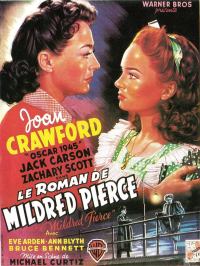




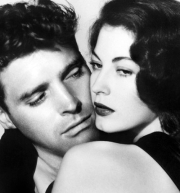




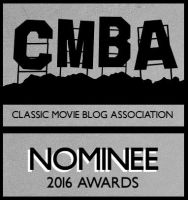








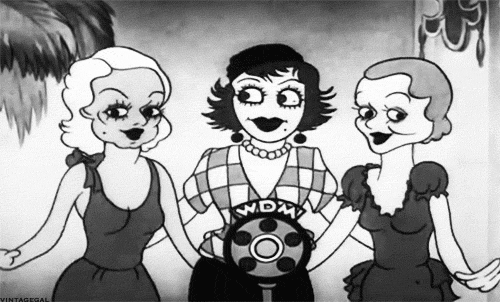
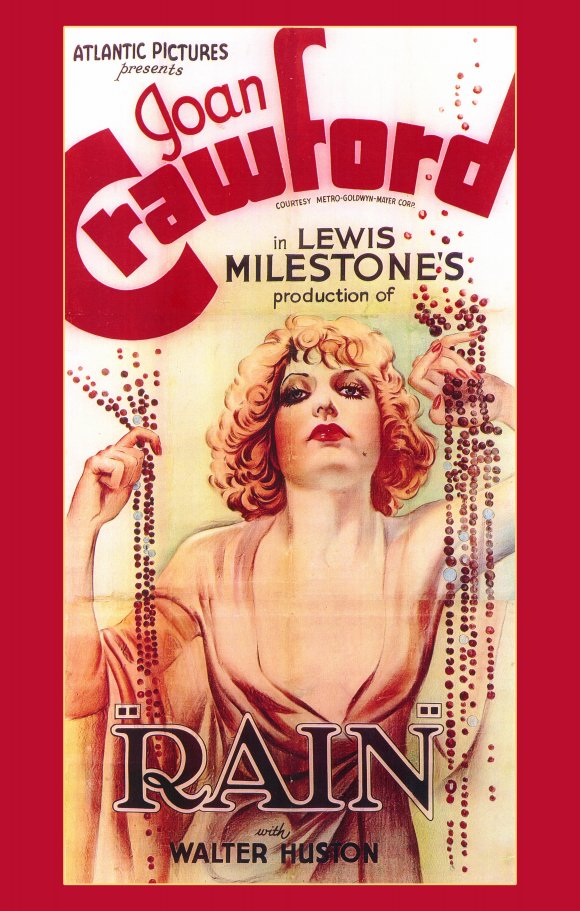

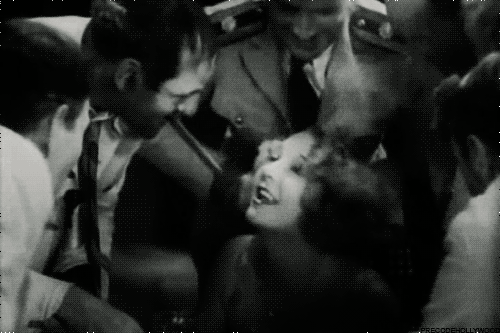
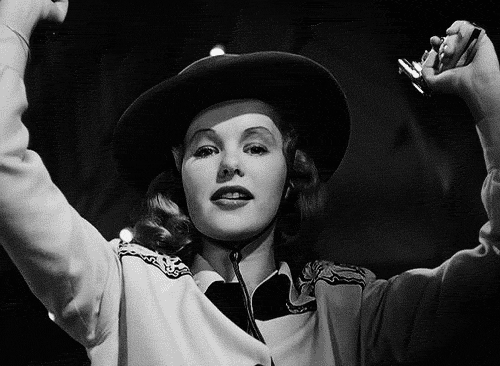

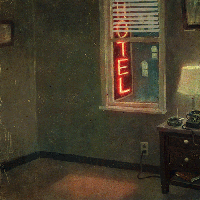
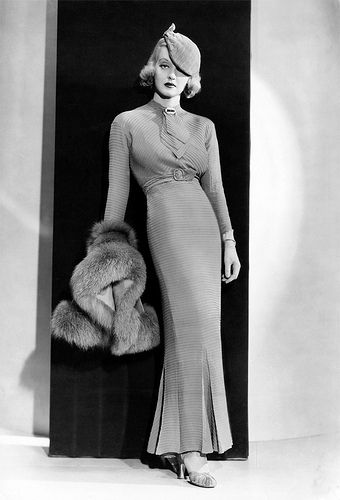


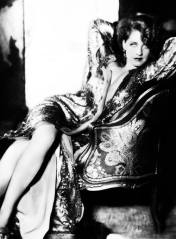
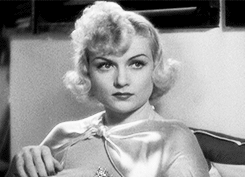






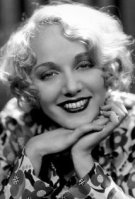
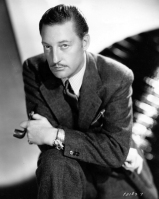
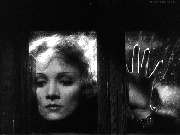


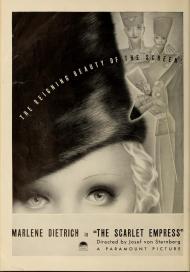
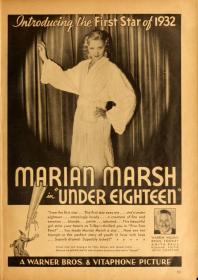
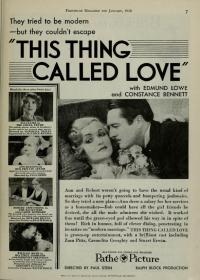


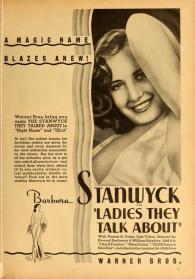


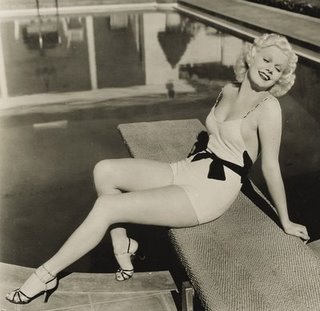




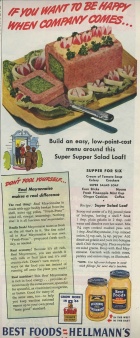
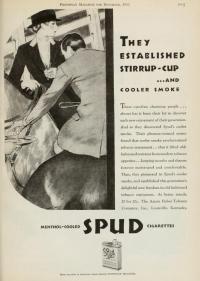

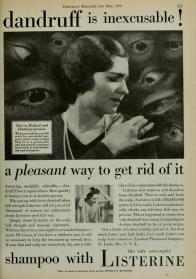
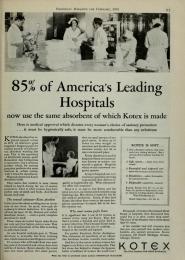
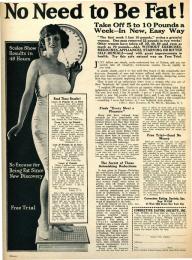


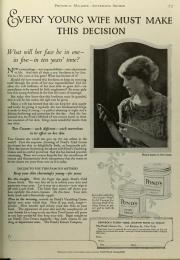
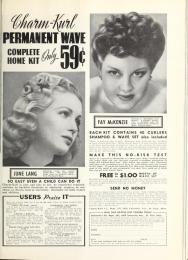
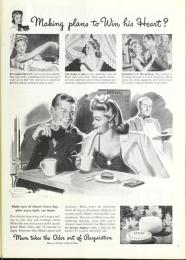


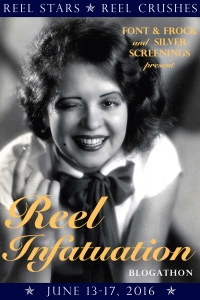

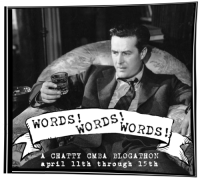

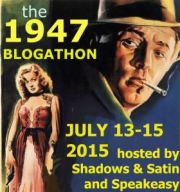
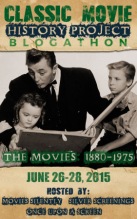

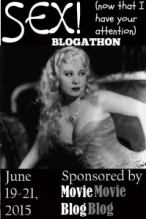
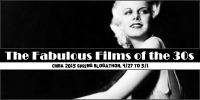
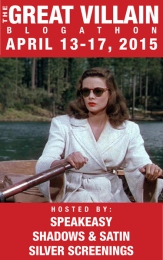

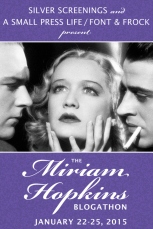
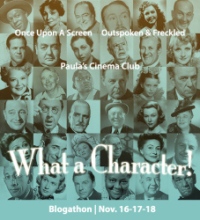
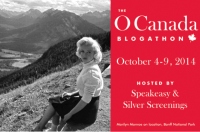



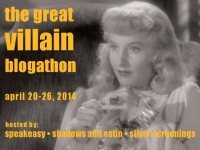
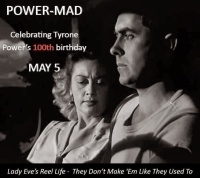


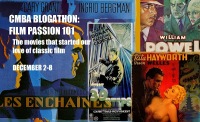
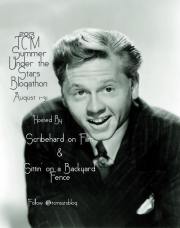
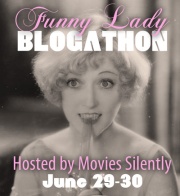




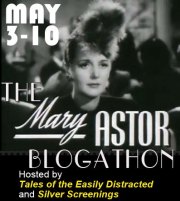


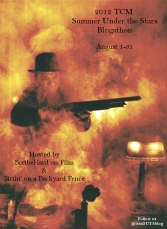


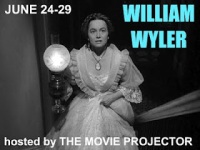

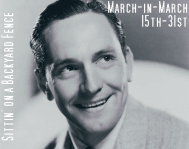
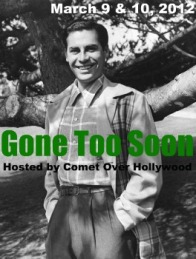


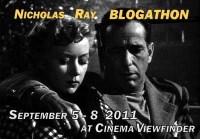

Epic post. Fascinating reading.
Thank you so much, Will! You are too kind, far too kind. 🙂
Holy crap, you’ve outdone yourself this time. I felt so many different emotions reading this. “No one disputes how I wear clothes” (Rosalind Russell)! Oh what a firey little vamp she was, I can’t believe this is the first time I am hearing about her. What an indulgence-I think I will pull out my box of chocolates and reread this post in my satin sheets..
Lisa, your comments made my whole day. I mean, my whole darn day. Thank you so much.
What a fascinating woman! I knew nothing – nothing – about her before reading your excellent post. I have bookmarked this page to refer back to when I look for some of her films on YouTube.
Thanks so much for introducing me to this remarkable actor.
Thank you so much, Ruth, and thank you for reading it! I know that it’s ridiculously long, but she was just so awesome, I couldn’t bear to leave anything out!
Excellent post on a fascinating figure who deserves to be better-known. You’ve obviously put a great deal of work into bringing her back into the light, so to speak. Tashman is just one of those people who sort of grabs you from out of nowhere — and is instantly intriguing. Thanks!
Thank you so much for your kind words, Gene! I heartily agree about Lilyan being instantly intriguing. There was just something about her. (And I’ll bet she was a hoot at dinner parties!)
I’ve been searching for information for years to verify the stories my grandmother told me as a child about Lilyan. My grandmother, Beatrice Wagner Berkowitz, was her cousin. She attended the funeral at Washington Cemetery in Brooklyn. I was told that teh crowd ripped pieces of Edmund Lowe’s clothing off of him for souvenirs. Now, I know her entire story was true. Thank you bringing Lilyan and her family back to my family tree! Great research.
Madelyn
Oh, my gosh, Madelyn! How awesome that you are related to Lilyan Tashman! Your comment made my whole day — heck, my whole week. Thank you so much for visiting, for reading, and for sharing your history.
[…] by far most proud of my profile on Lilyan Tashman, Girl About Town. Lilyan is one of the most captivating personages I’ve ever come […]
One more little thing, Lilyan’s sister in the lawsuit against Lowe last name was Blumenson not Steinman. Thanks again for a wonder article!
Madelyn
Thank you, Miss Smallberg — I appreciate the correct information — I’ve updated the name.
[…] If you'd like to read more about Lilyan Tashman my friend Karen at Shadows and Satin has written a lengthy post about the actress that's both informative and thoughtful. Skip Wikipedia, this is the ultimate Lilyan Tashman biography. […]
I just wanted to compliment you on this brilliant piece! One of the most fascinating silent and early talkie performers, this is the only piece I’ve read (apart from her entry in “They had Faces Then”) that does her justice.
Thank you so much, Norman, for your kind words. They are truly appreciated.
[…] classic movie blog, Shadows and Satin. She certainly led an unusual life; you can read the article here. (Say! If you’re not a regular reader of Shadows and Satin, you should click the […]
WOW! Ruth, your posts are always a treat, but your fascinating saga about Lilyan Tashman’s life and career deserve all the accolades you deserve, and then some! What a shame she died too soon, but what an incandescent personality Ms. Tashman was! As for rumors of being gay or lesbians, it’s nobody’s business as long as she and Lowe were happy in their lives together. This post could be a heck of a biopic; alas, I don’t know any producers, but your post about Ms. Tashman was beauftully rendered, and well worth reading indeed! BRAVA to you one one of your greatest blog posts to date, Ruth!
Thanks, Dorian — you mean me? ;o)
Wow what a read! I love and appreciate all the hard work and research you’ve done for the great Lilyan Tashman. I’d seen her in a few movies before and I was drawn to her as well. I’ve seen many sources citing she was a lesbian, one source in particular seemed very well researched so I’m fairly sure it’s true though there’s no way of knowing now. Her sexuality is unimportant to me though. What surprises me are all the sources claiming Lilyan had an affair with the famously bisexual Greta Garbo. Is that true!? After all, Garbo was a known recluse and hearing that her an Lilyan might’ve been an item is a huge deal. I’ve always wondered where that notion of them being together started…
Hi, Anne – Thank you so much for your kind words. I read in several couple of sources that Lilyan had relationships with women, including Garbo, but I always hesitate to repeat this kind of information unless it’s common, and indisputable, knowledge. In so many cases, I’ve found that one source will repeat information from another source, and the pattern keeps repeating — but who knows where the information started, and the source for that information? So I tend to steer clear. I’m so glad you enjoyed the post — it’s one of my all-time favorites!
It’s great to see this site is still up and running! Lilyan is my great aunt on my father’s side. Both she and Ed were gay but they had a great love for each other and, as I understand from my father (who died many years ago) that Ed never recovered from the loss of Lil. I don have a number of pictures of her and some of them together. On this web page there are a few pictures of them at the beach. I have a number of the originals of those pictures. Have a happy 2021!
[…] can see Lilyan in these films on youtube: Girls About Town and Millie. Want to know more? The blog Satin and Shadows has a THE biography on Lilyan […]
Thank you so much for this lovely mention!
[…] to attempt a biographical post about Tashman a couple of years back, but put it off after reading this amazing post by Karen at Shadows and Satin. When I need Tashman info, I just click over there […]
Thanks so much for your kind words, Cliff!
The Rudolph valentino society talks of stars who become gay when they die, a strange trend ;some people who wish to claim hetrosexuals as gay the valentino site goes into great detail about why they do this and to try and understand the reasons for it.
What a fascinating phenomenon, Andrew! I looked for this discussion on the Rudolph Valentino website, but couldn’t find it. Can you direct me to it?
I knew OF her. I don’t think I saw anything with her in it that registered. And then, via YouTube, Girls about Town. Tashman is amazing. Brilliant comic timing, a vivacious and witty ‘broad’. Her performance in this is knowing, sharp, spot on. Fmik
I agree with every word, Mike. She was really something to see.
Just caught up with this piece, Karen, and really enjoyed it. So detailed and well researched! Learned a lot. 🙂
Best wishes,
Laura
Thank you so much for reading it, Laura, and for your kind words. You’re the berries. 🙂
Please–did you find out what Lilyan Tashman’s favorite cocktail was? You mentioned it in opening. This is a fascinating bio–thank you!!
Yikes — I left that out?? You can bet I’ll be poring through my notes to find it, Stuart! Thanks so much for reading, and for your kind words. (I’ll get back to you on that drink!!)
Thank you!! Dying to know her tipple. I first saw Tashman in “Murder by the Clock” and then in “Bulldog Drummond” and she’s wonderful and unique. If only she had lived another 40 years….
Hi, Stuart. I know it’s been years since you asked me about Lilyan’s favorite cocktail, and I don’t know if you’ll see this, but I hope you will.
According to Screenland, Lilyan’s favorite cocktail (and also the favorite of her husband, Edmund Lowe), was something called a Brandy Blazer. This is how the magazine says you make one drink of this concoction: Use one glass of brandy, add a lump of sugar, one piece of lemon peel and one piece of orange peel. When serving, light with match, stir and serve.
The article adds: “The serving of a tray filled with Blazers, all in blue flame, distinguishes this drink.”
Cheers!
Enjoyed this article. Lilyan was my great aunt, although she died a generation before I was born. Thank you for the research and depth of this great piece.
Thank you so much for writing, John, and for your kind words. I completely fell for your great aunt — getting to know her through my research has been one of the highlights of my writing experience. Your comment made my day. 🙂
Awesome
Thank you so much!
You brought Lilyan to life in this piece – what a great, detailed and fun read. I have been looking to find information about Lilyan for awhile now, and by finding your site I hit gold! Thank you so much!!!! Any word on her favorite cocktail? I just may toast the grand Lilyan tonight!
Thank you so, so much for your kind words, Lisa! I’m so pleased that you enjoyed my post. After I read your comment, I spent literally HOURS combing through my Lilyan Tashman file, looking for the info about her favorite drink. I can’t believe I didn’t find it! I’m not giving up, though — I never throw anything away, so it’s got to be somewhere in my house! I am determined . . .
Lisa, I hope you’re still able to read this! You won’t believe it, but I’ve been searching, off and on, for my Lilyan’s favorite cocktail source ever since you wrote your comments. I knew I got it from somewhere, but for the life of me, I couldn’t find it anywhere, in any of my files or folders.
Well, I am tickled pink to tell you that after all this time, I just found it. Just by chance, while researching ideas for a post, I was going through my file of old Screenland magazine articles, and there it was!!
So, at long last, the answer to your question — according to Screenland, Lilyan’s favorite cocktail (and also the favorite of her husband, Edmund Lowe), was something called a Brandy Blazer. This is how the magazine says you make one drink of this concoction: Use one glass of brandy, add a lump of sugar, one piece of lemon peel and one piece of orange peel. When serving, light with match, stir and serve.
The article adds: “The serving of a tray filled with Blazers, all in blue flame, distinguishes this drink.”
Sounds like you’d be on the floor before you could make a second one! (One GLASS of brandy!?!?)
And there you have it!
🙂
[…] Joan Blondell and Lilyan Tashman steal pretty much every scene they’re in. Many reviews of this film assert with confidence that their characters are lesbians, but I just don’t see it. Just because they live together and, in their first scene, are in the same bed – I mean, really? But whatever. I just thought I’d point that out. And while I’m pointing things out, if you know me at all, you might know that I’m a ginormous Lilyan Tashman fan. If you’d like to read more about her life on and off the screen, click here. […]
One of the most fascinating and interesting stories I’ve ever read in my life, And I’m 77.. The twenties and thirties are some of the best years of Existence.. Look into a book by “Murphy” cannot remember His 1st name, About the discovery of French Riviera with F. Scott Fitzgerald, In the Twenties, Entitled “Living Well is the Best Revenge”
Reading your article was delightful, Informative, And entertaining. It was at the beginning of Hollywood’s Glamorous days, I knew and loved everyone mentioned, Except for Lilyan Tashman… So I am grateful for your article, You have presented her well, And “Done me a ‘SOLID’ for getting to read it, AND Discovering her life.. Thank you again!
I’m so sorry that I’m just now seeing your comment, Vincent! Thank you so very much for your kind comments — they are so appreciated. And I am so gratified that you appreciate Miss Tashman as much as I do — as my mother would say, she was something else! Thank you again, Vincent. You made my day!
Noticing a ’22 reply, it’s so terrific to be able to thank you for your excellent ’12 article on Lilyan Tashman. I’ve recently been enjoying her husband Edmund Lowe’s early ’30’s movies and ‘noir’ ’51 TV show, Front Page Detective. He’s such a marvelous actor, and I certainly wish Lilyan had co-starred with him in pre-code movies! Your writing gives the reader an objective appreciation of their unique relationship. 🎬💖
Thank you so much for your kind words, Cynthia. I developed quite an obsession with Lilyan — and it was such an awesome experience getting to know her. I would love to have seen her and Edmund Lowe on screen together. I I’d like to see to see Front Page Detective, too. Where do you see it?
Hi there – I did look up Lilyan on YouTube; so neat to see her & hear her sultry voice! Came across Front Page Detective on YouTube recently – only see approx 10 episodes posted, but ones I’ve seen have been really clever stories. (E. Lowe plays a columnist who helps solve crimes. He’s as dapper as ever). Believe it or not, when I saw your msg, I was watching “Dillinger” (from ’45), as EL has a supporting part. Happened upon it via TCM OnDemand.
Thank you, Cynthia – I will definitely give Front Page Detective a look-see!
Hi – just read your TCM Film Festival itinerary, and I think your energy is amazing! It’s terrific you can enjoy this exciting event with your daughter. 🎬 Btw, if you haven’t seen it already, I heartily recommend seeing “The Whole Town’s Talking” (from ’35; on YT) with Edward G. Robinson (in a dual role!) & Jean Arthur. Also, I believe you’d enjoy “Little Giant” (’33; on YT) w/ Edward G & Mary Astor and “The Man With Two Faces” (’34; has been on TCM) w/ Edward G, Mary Astor, Ricardo Cortez & Mae Clarke. {Latter would qualify as pre-code & noir – it s/b in TCM’s April lineup!} 😎
Thank you so much for reading my festival plans — I usually see between 8 and 10 movies, but I’m always amazed by my fellow festgoers who see as many as 20! Thank you, too, for your recommendations — I love Little Giant, and I finally saw The Whole Town’s Talking earlier this year. I’ve never seen The Man With Two Faces, though — and what a cast! I look so forward to seeing it; in addition to Robinson, I’m a big fan of Mary Astor, Ricardo Cortez, AND Mae Clarke! Can’t wait!
[…] Overall, the film was so-so – the best thing about it, for me, was the fact that it featured Lilyan Tashman, who is always fascinating to watch, no matter the size of the […]
[…] It is in 1934 that our story of mayonnaise and Lilyan Tashman takes a sad turn, for in that same year of “Rip Tide” Ms. Tashman died from cancer, age 37. While one is tempted to snark on the irony of mayo-as-diet and early death, Lilyan Tashman’s short life and story was much more interesting and remarkable. Instead of copy/pasting her bio, readers can just go beyond Wiki to find out more here, here, and here. […]
Lilyan Tashman: More Than Mayonnaise – Better Burque said this on December 28, 2023 at 9:50 am |
[…] the subway. One of eight Swanson features directed by Allan Dwan, the film’s cast also included Lilyan Tashman, Frank Morgan, and Ian Keith in his big screen […]